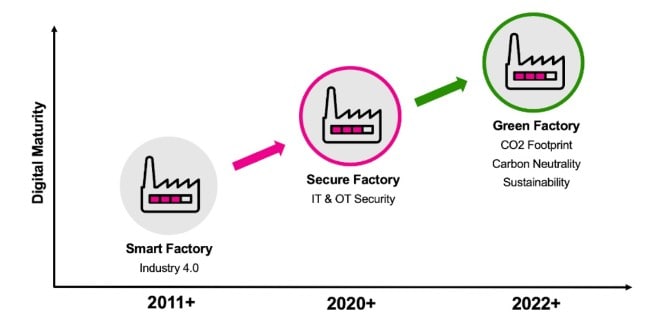The Expanding Threat Landscape in Smart Factories
Smart factories, with their interconnected systems and reliance on data, are increasingly attractive targets for cybercriminals. The sheer volume of sensitive data—from production schedules and intellectual property to customer information and financial records—makes them a lucrative prize. Traditional security measures often fall short in protecting the complex web of devices, systems, and networks that define a modern smart factory. Attacks can range from relatively simple phishing scams targeting employees to sophisticated, targeted intrusions aimed at stealing proprietary information or disrupting operations. The consequences of a successful cyberattack can be devastating, leading to production downtime, financial losses, reputational damage, and even safety hazards.
The Importance of Proactive Security Measures
Instead of reacting to attacks, a proactive approach to security is crucial for smart factories. This means implementing robust security measures from the outset, rather than adding them as an afterthought. A layered security approach, incorporating multiple defense mechanisms, is the most effective way to protect against a wide range of threats. This includes everything from strong passwords and multi-factor authentication to advanced intrusion detection systems and regular security audits. Investing in employee training is also vital, as human error remains a significant vulnerability in many organizations.

Securing the Industrial Internet of Things (IIoT)
The IIoT is the backbone of a smart factory, connecting countless devices and systems. Securing this vast network is arguably the biggest challenge. Many IIoT devices are deployed without sufficient security considerations, inheriting vulnerabilities that can be exploited by attackers. Implementing robust security protocols, including secure boot processes, secure firmware updates, and strong encryption, is critical. Regular patching and vulnerability scanning are also essential to identify and address security weaknesses in a timely manner. Network segmentation can help to isolate critical systems from less sensitive ones, limiting the impact of a potential breach.
Data Security and Protection
Data is the lifeblood of a smart factory. Protecting this data from unauthorized access, modification, or destruction is paramount. This requires a multi-faceted approach that includes data encryption both in transit and at rest, access control mechanisms to limit who can view and modify sensitive information, and regular data backups to ensure business continuity in the event of a data breach. Compliance with relevant data protection regulations, such as GDPR, CCPA, and others, is also critical, ensuring that the factory operates within the legal framework and protecting the privacy of its customers and employees.
Building a Culture of Security
Security isn’t just a technological challenge; it’s a cultural one. Building a security-conscious culture within the organization is essential for effective protection. This means educating employees about cybersecurity best practices, such as recognizing phishing scams and avoiding unsafe websites. Regular security awareness training should be incorporated into employee onboarding and ongoing development programs. Establishing clear security policies and procedures, and ensuring that they are consistently enforced, is also crucial. Furthermore, fostering open communication and encouraging employees to report suspicious activity helps to create a proactive and responsive security culture.
Leveraging Advanced Security Technologies
Beyond the basics, advanced security technologies can significantly enhance protection in smart factories. Artificial intelligence (AI) and machine learning (ML) are increasingly being used to detect anomalies and potential threats in real-time, providing proactive alerts and responses. Blockchain technology can improve data integrity and transparency, ensuring the authenticity and trustworthiness of data throughout the supply chain. Security information and event management (SIEM) systems can collect and analyze security data from various sources, providing a comprehensive view of the security posture of the factory and enabling faster incident response. Regularly exploring and implementing such advancements keeps your factory ahead of evolving threats.
Continuous Monitoring and Improvement
Security is not a one-time implementation but an ongoing process. Continuous monitoring and improvement are essential to adapt to the ever-evolving threat landscape. Regular security assessments and penetration testing can identify vulnerabilities and weaknesses before they can be exploited. Incident response planning is also crucial, outlining the steps to be taken in the event of a security incident. This plan should include communication protocols, data recovery procedures, and steps to contain and mitigate the impact of the incident. Post-incident analysis is vital for learning from past experiences and improving future security measures. Please click here to learn about OT security for smart factories.

